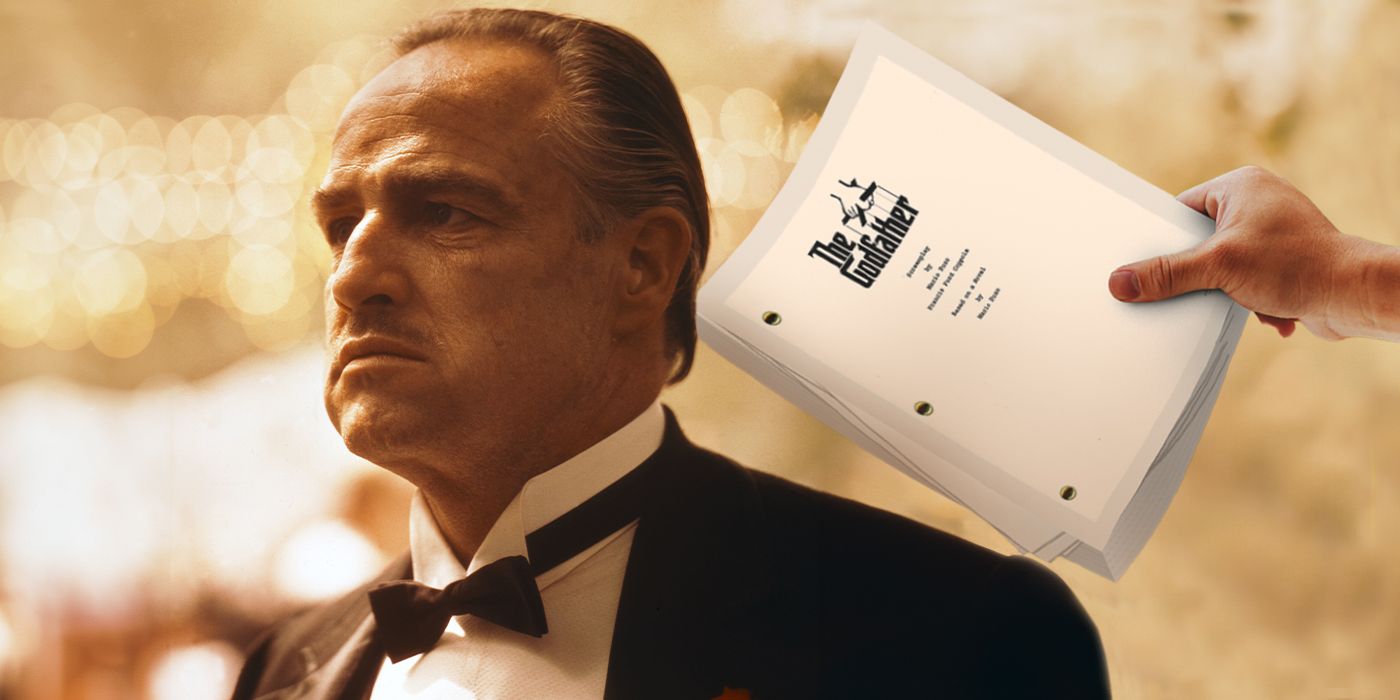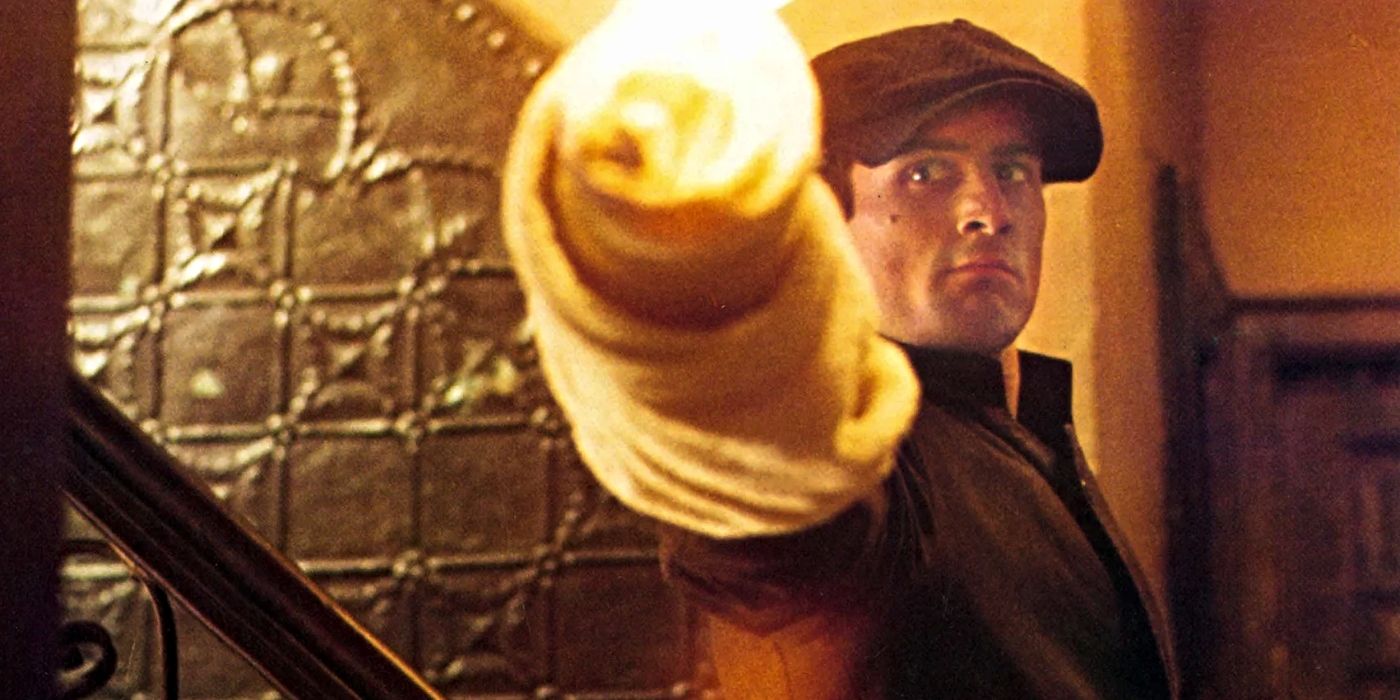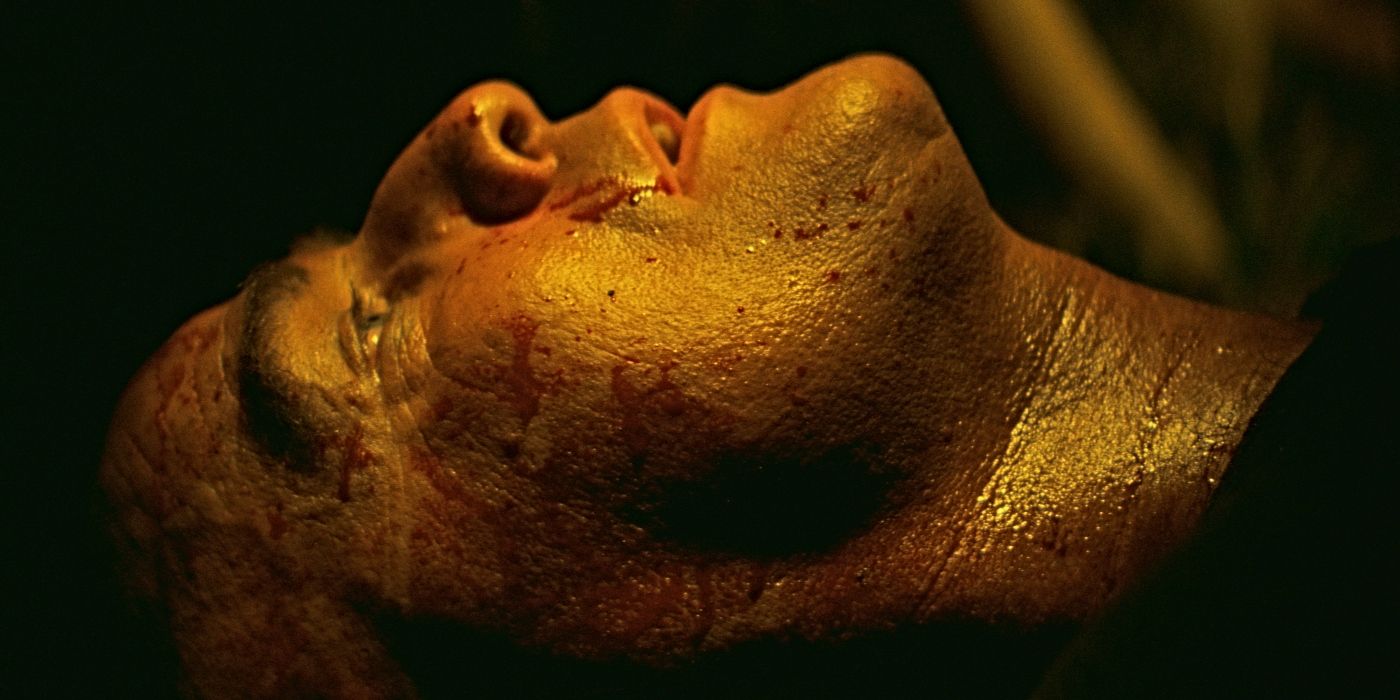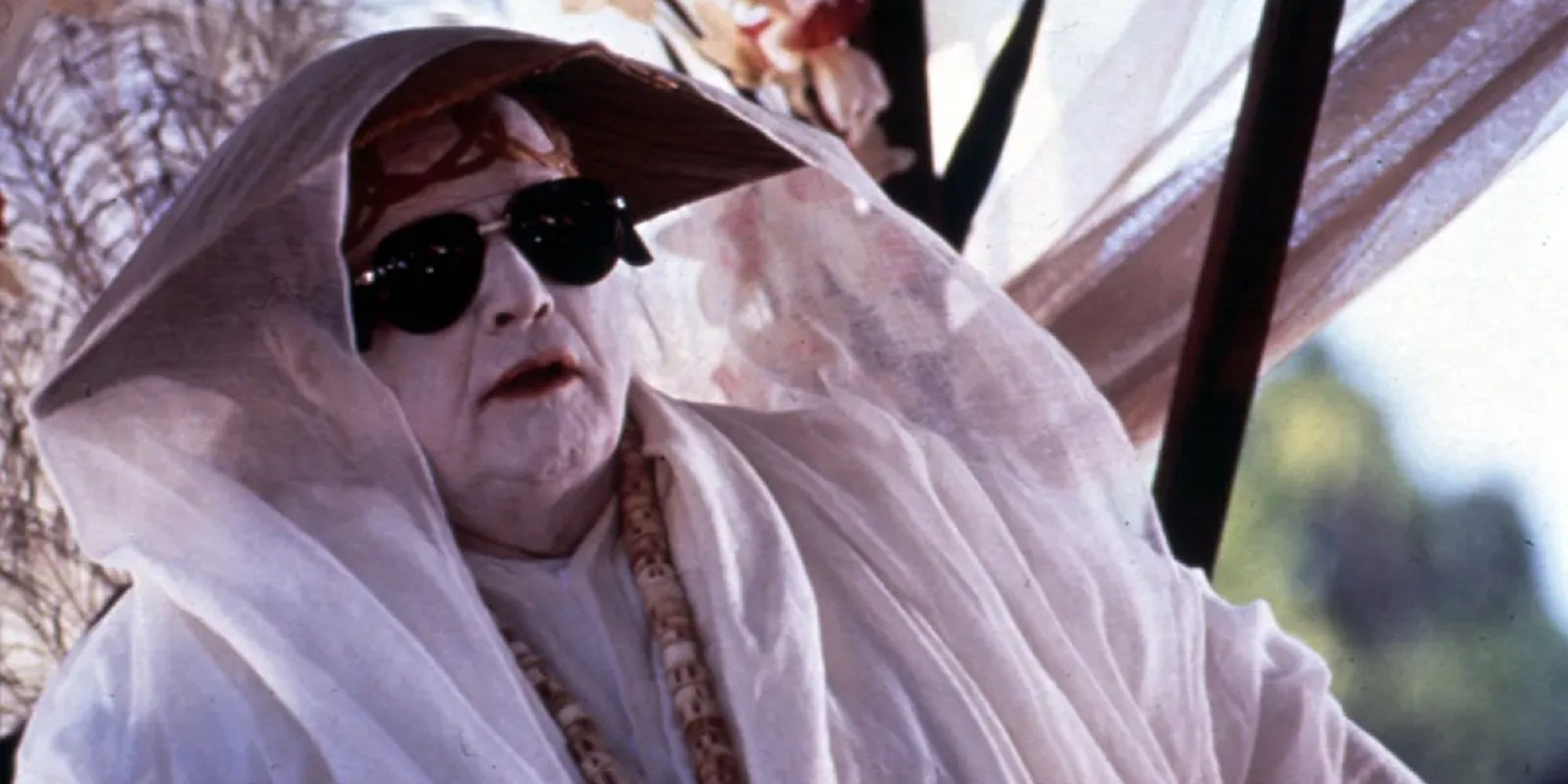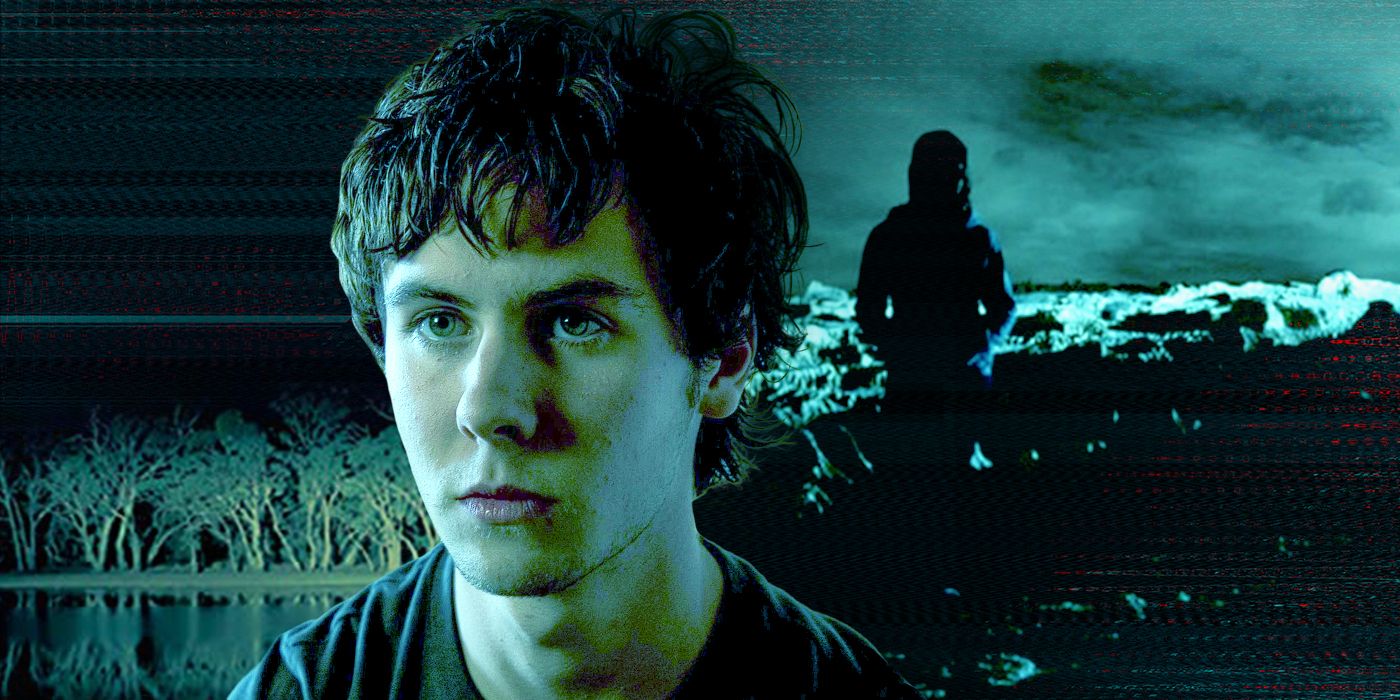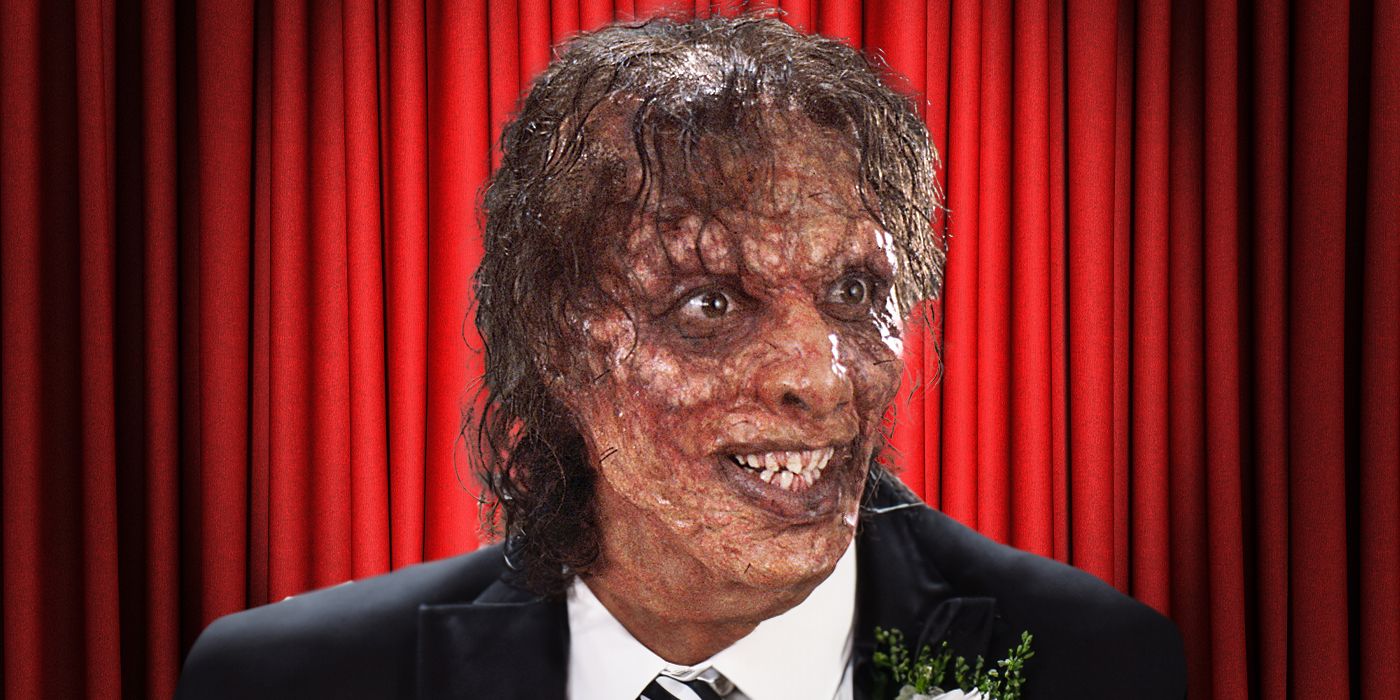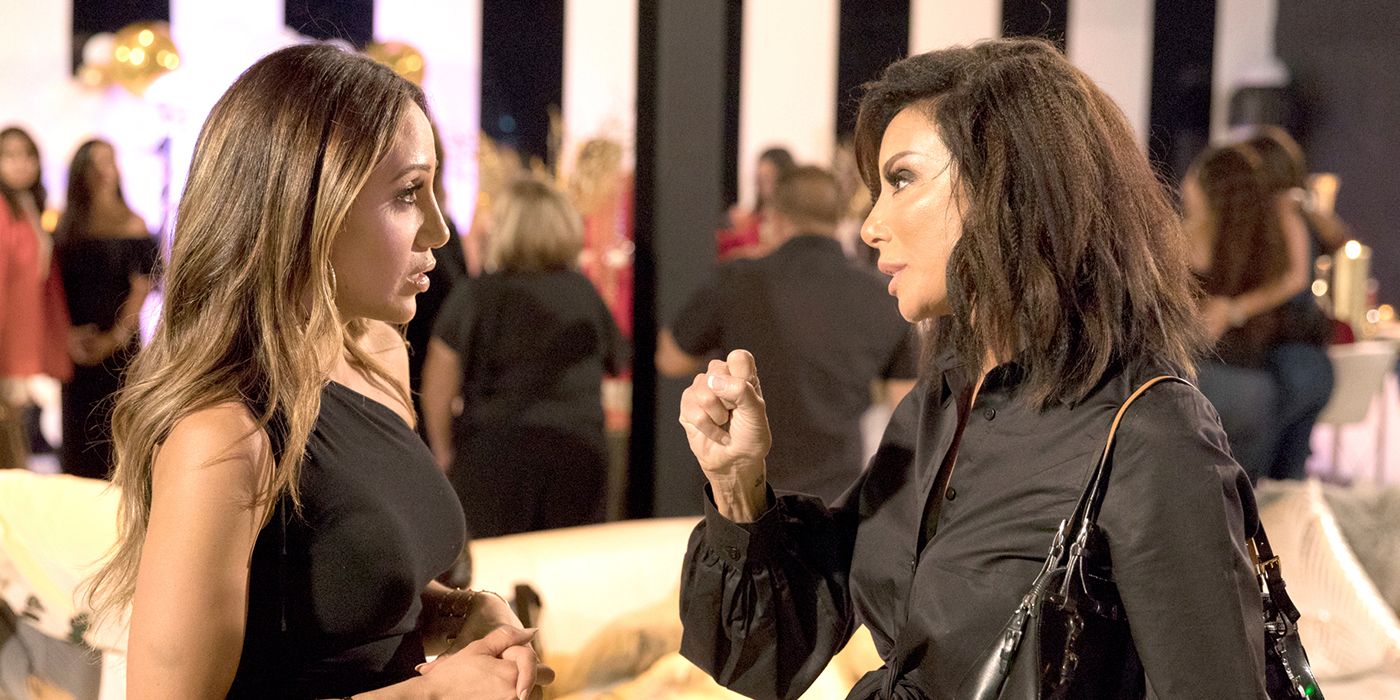The Big Picture
- Marlon Brando’s casting as Don Corleone in
The Godfather
was initially opposed by the studio. - Brando used cue cards on set rather than memorizing his iconic lines, showing his unique approach to acting.
- During
Apocalypse Now
, Brando had his lines fed to him through an earpiece, reflecting his unconventional process.
Just because Marlon Brando is one of the greatest, if not the greatest, screen actors to ever live, it doesn’t mean that aspiring performers should emulate his work ethic. Brando may have introduced a new style of performance to audiences that remains the gold standard for many prestigious actors. Still, he also found new ways to create more headaches for his fellow cast and crew members, especially as he aged. The ultimate paradox of Brando is evident in the production of The Godfather. The film gave Brando a career resurgence, and it provided arguably his crowning achievement as an actor, yet he never found the time to remember his lines while filming.
Marlon Brando’s Casting in ‘The Godfather’ Was a Career Comeback
Believe it or not, casting Marlon Brando for your movie in the early ’70s was considered a risky proposition by studios. The halcyon days of A Streetcar Named Desire, On the Waterfront, and The Fugitive Kind seemed like ancient history. What was once a generational talent who brought an unorthodox style of method acting to Western audiencesbecame a has-been, like Waterfront‘s Terry Malloy. When filming The Godfather, Francis Ford Coppola fought tooth and nail to get approval for every creative decision, from setting to casting. The role of Don Vito Corleone, the patriarch of a powerful mafia family in New York City, was an enticing role for any actor. The studio, Paramount, led by Robert Evans, opposed the casting of Brando, Coppola’s primary choice, due to his rapid decline as a box office-friendly star. Hollywood stardom fades away in the blink of an eye. Suddenly, Brando was no longer remembered for triumphs like Streetcar Named Desire or On the Waterfront, but instead, flops like One-Eyed Jacks and Charlie Chaplin‘s final film, A Countess from Hong Kong. Throughout his career, Brando was labeled a difficult star to manage, as he was a resilient financial negotiator.
3:20
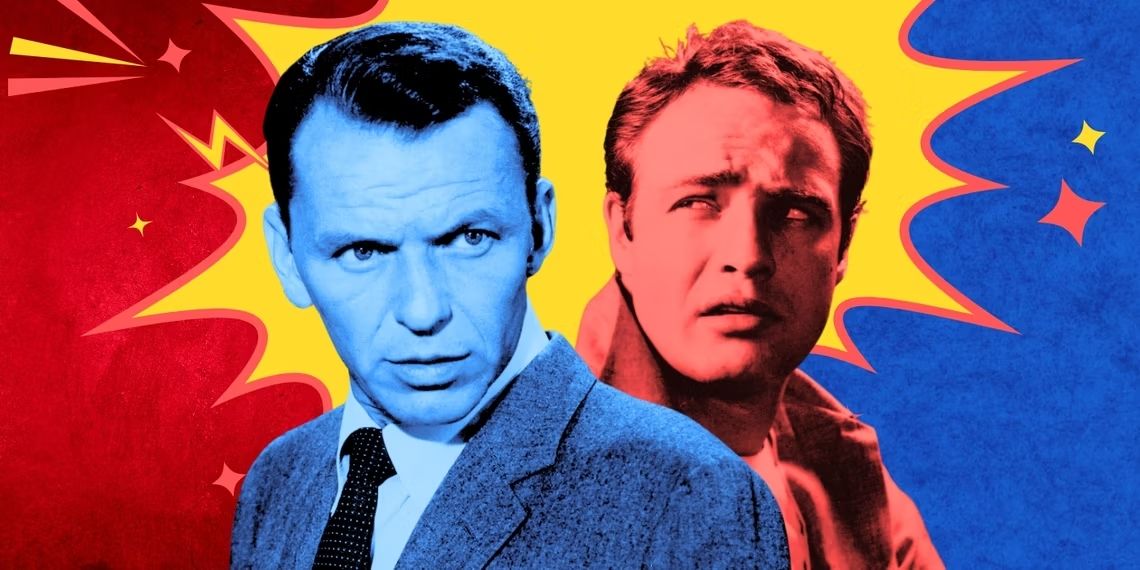
Related
Frank Sinatra & Marlon Brando Feuded While Making This Gangster Musical
If luck be a lady, she stayed out of this brutal off-screen feud.
Production of The Godfather, from Coppola’s arduous battles with Evans to the lingering threat of the real-life mafia, indicated that everything was going to go awry. But of course, Brando was cast as Don Corleone, and The Godfather became one of the great American films of all time. In particular, Brando’s performance is the ultimate triumph. The Don was written as an aging mafia boss nearing the end of his life, but Brando was only 47 at the time of filming. Thanks to impeccable makeup work, creative lighting by renowned cinematographer Gordon Willis, and Brando’s innate gravitas, he seamlessly passed like an elderly man. Even with the audience’s pre-established relationship with Brando in 1972, Don Corleone quickly became an indelible film character. It’s a performance supported by virtuosic embellishments and characteristics. Brando utilizing that distinct voice could’ve been a disaster, but the performance brought him back to his roots as the soulful, melancholic embodiment of the work of Tennessee Williams.
Marlon Brando Read Cue Cards While Filming ‘The Godfather’
Francis Ford Coppola and his co-writer, Mario Puzo, the author of the original novel, are responsible for some of the most iconic lines in film history. Marlon Brando was lucky enough to have his name further etched into history by being the orator of countless quotable lines, notably “I’m going to make him an offer he can’t refuse,” and “Look how they massacred my boy!” For lines that instantly became memorable, you’d think any actor would have these words stuck in their head forever. Instead, Brando opted to have cue cards placed in his line of sight on the set of The Godfather. Adapting to the geography of the set, he would find new ways to seamlessly read off his cue cards, which included placing them behind a lamp. Robert Duvall, who played Don Vito’s trusted consigliere, Tom Hagen, proved himself to be an essential advisor in real life, as, in one instance, the cards were placed on Duvall’s chest.
Brando’s future struggles with laziness and tardiness suggest that his knack for using cue cards to recall lines is an exemplification of his lack of dedication. However, according to the actor, this practice was not deployed out of laziness, but rather, as an exhibition of his specific craft. Brando emerged out of the Stanislavski Method, an approach to performance that favored naturalistic spontaneity rather than practiced recital. For Brando, using cue cards triggered the spontaneous style of free-flowing acting that made him a legend. In the book Somebody: The Reckless Life and Remarkable Career of Marlon Brando, he said that actively searching for what to say is a fundamental aspect of everyday conversation, explaining that, “In ordinary life, people seldom know exactly what they’re going to say when they open their mouths and start to express a thought. They’re still thinking, and the fact that they are looking for words shows on their faces.” This approach allowed Brando to contribute inspired improvisations, such as when he physically and verbally reprimanded Johnny Fontane (Al Martino) for his cowardice.
Marlon Brando Refused to Appear in ‘The Godfather: Part II’
Working with Marlon Brando was an artistic privilege. However, the cost of success was an onslaught of struggles during production. Throughout filming of The Godfather, while the cue cards were an inconvenience, Brando was on his best behavior, at least to his standards. After winning an Academy Award for his iconic turn as Vito Corleone, Brando quickly returned to his old habits, causing havoc in films he never starred in. The Godfather: Part II, chronicling Michael Corleone’s (Al Pacino) reign as the Don juxtaposed to a young Vito’s rise to power, did not need Brando’s services, as Robert De Niro played the young Vito in an Oscar-winning performance.
One scene, a flashback at the end of the film showcasing the family together at the Corleone dinner table, called for Brando’s appearance, who agreed to reprise his role as the Don in a glorified cameo. While the details are vague, Francis Ford Coppola alluded to Vito’s scene with Michael being dramatically stirring, perhaps evocative of the garden scene in Part I. When it came time to shoot, Brando was nowhere to be found. According to Coppola, the actor was still frustrated with Paramount over his poor compensation for the first Godfather. Coppola, quick on his feet, adapted to the circumstances and changed the scene so that the family reacted to Vito entering his home without ever showing him. Instead, the last shot of the scene lingers with Michael, as he is left alone at the dinner table as his brothers gather around his father. The scene poetically telegraphs that Michael was always destined to be an outsider by his own undoing, which is tragically demonstrated in The Godfather: Part II‘s overarching story.
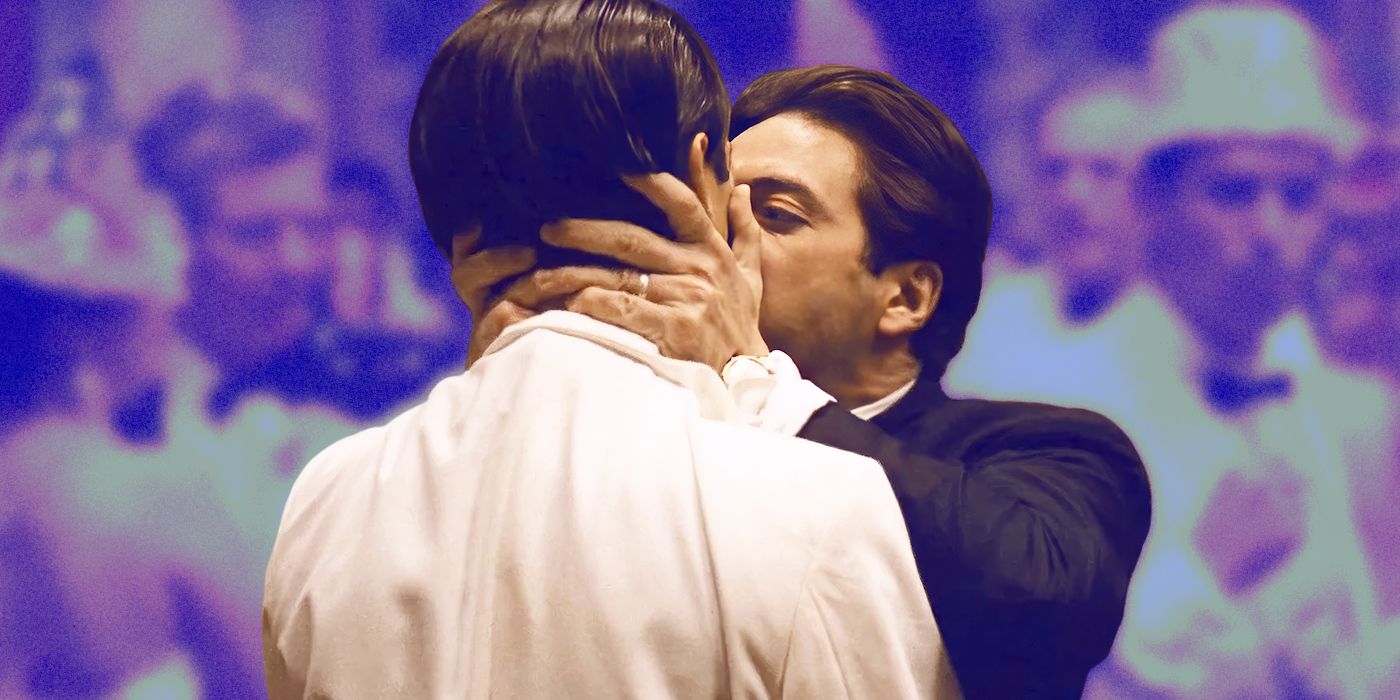
Related
What the Fredo Kiss Meant for ‘The Godfather’ Franchise
“I know it was you, Fredo.”
An unexpected cameo by Brando as Vito Corleone would have been emotionally gratifying at the end of a bleak crime epic in The Godfather: Part II. For the betterment of Coppola’s masterful vision, Brando’s absence inadvertently makes the flashback scene more poignant. Vito’s presence lingers over the Corleone brothers, even if he’s not present in the room with them. With the context of Godfather II in mind, we understand that Michael, Tom, Fredo (John Cazale), and Sonny (James Caan), are all striving to be like their father, but they ultimately fall as a result of greed or failed judgment.
Marlon Brando Had Lines Fed to Him via Earpiece During ‘Apocalypse Now’
If the making of The Godfather was a series of brushfires, then the making of Apocalypse Now was one giant inferno of chaos. Unflinchingly captured by his late wife, Eleanor Coppola, in her documentary, Hearts of Darkness, Francis Ford Coppola nearly drove himself to complete irreversible despair while filming the ambitious Vietnam War epic. If there weren’t already enough problems for the director, Brando — who played Colonel Kurtz, the target of Captain Willard’s (Martin Sheen) mission into the depths of Cambodia — brought a series of setbacks. His vision for Kurtz clashed with Coppola’s, notably the character’s physicality, as Brando’s heavy physique compromised Coppola’s interpretation of a scrawny AWOL soldier trapped in the woods. Furthermore, Brando would often improvise his lines, which consisted of various rambling tangents. Hearts of Darkness captured the hostile relationship between Brando and his co-star, Dennis Hopper. If Brando wasn’t causing drama on the set, it was usually because he was running late. The chaos Paramount envisioned when they first signed on Brando for The Godfather came to fruition in the jungle of Cambodia.
Considering the frantic surroundings and uninhabitable setting of the film, it should come as no surprise that Brando, once again, refused to memorize his lines for Apocalypse Now. However, this time, reading cue cards in the dimly lit confines of the jungle was out of the question. He found an even more intuitive way to exploit his spontaneity, as, according to Robert Duvall, who also starred in Apocalypse Now, Coppola fed Brando his lines via electronic earpiece. Duvall shared this anecdote on the Late Show during his promotional tour for The Judge. He also made an appearance on Late Night with Seth Meyers, where he revealed more Brando antics. During the touching scene in The Godfather when Vito sits in the garden with Michael over his abandonment of life as an upstanding citizen, Duvall recalled that Brando was reading his lines from a tree that stood above him.
Marlon Brando’s Difficult Reputation Persisted Throughout His Career
While Brando’s work output slowed down in his later years, his propensity for causing on-set issues did not. The notorious flop, The Island of Dr. Moreau, was compromised by the actor’s lack of motivation to learn his lines. In a fitting send-off to his career, Brando’s final film role in The Score saw the actor refusing to cooperate with director Frank Oz. A belligerent Brando ridiculed the director by calling him “Miss Piggy,” a reference to Oz’s tenure as a creative force behind The Muppets.
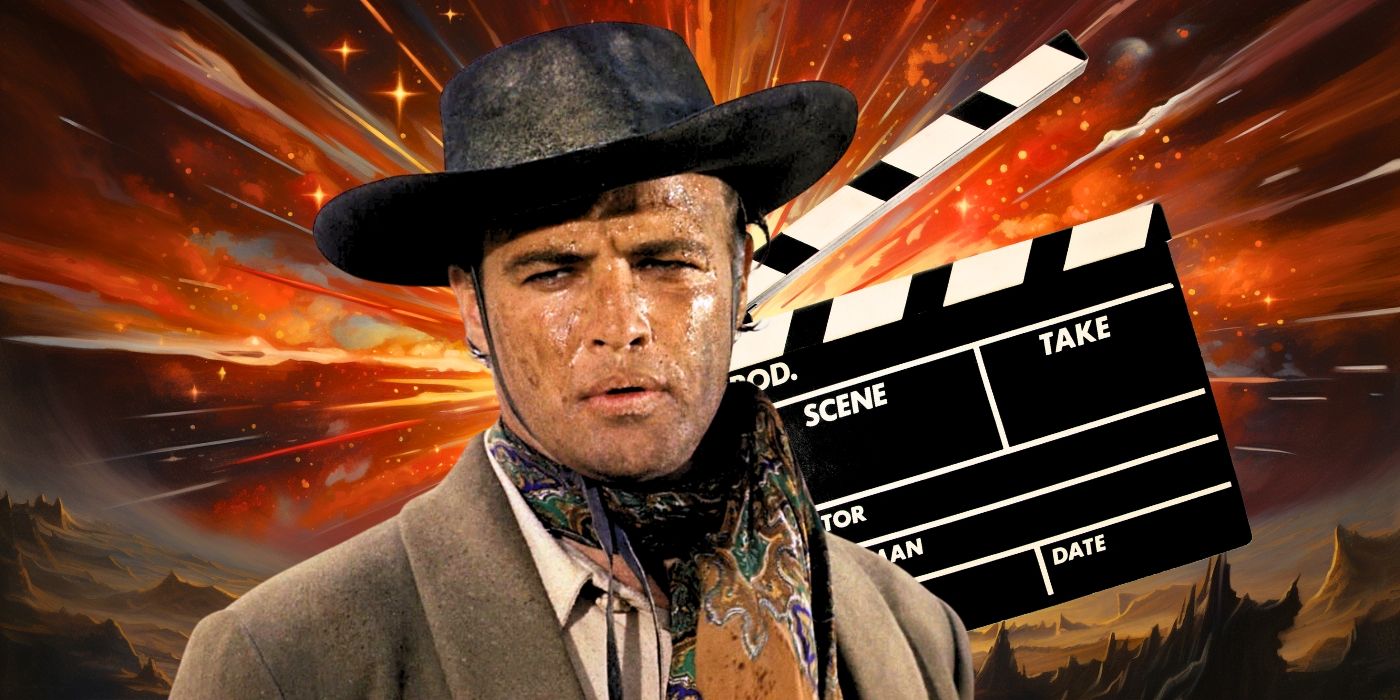
Related
Marlon Brando’s Good Reason for Turning Down This Oscar-Nominated Western Role
Brando turned down the chance to play a pivotal character in Arthur Penn’s classic Western, and we’re glad he did!
The artistry behind Marlon Brando’s craft is something that can’t, and perhaps shouldn’t, be replicated by other aspiring actors. Whether Brando’s preference for cue cards rather than the tried and true formula of memorization was a strategic choice or a sign of laziness is up for debate, but there is no doubt that it further cemented the distinct persona of the actor. Quirks and eccentricities are packaged with greatness when it comes to Brando.
The Godfather is available to stream on Paramount+ in the U.S.
Watch on Paramount+

